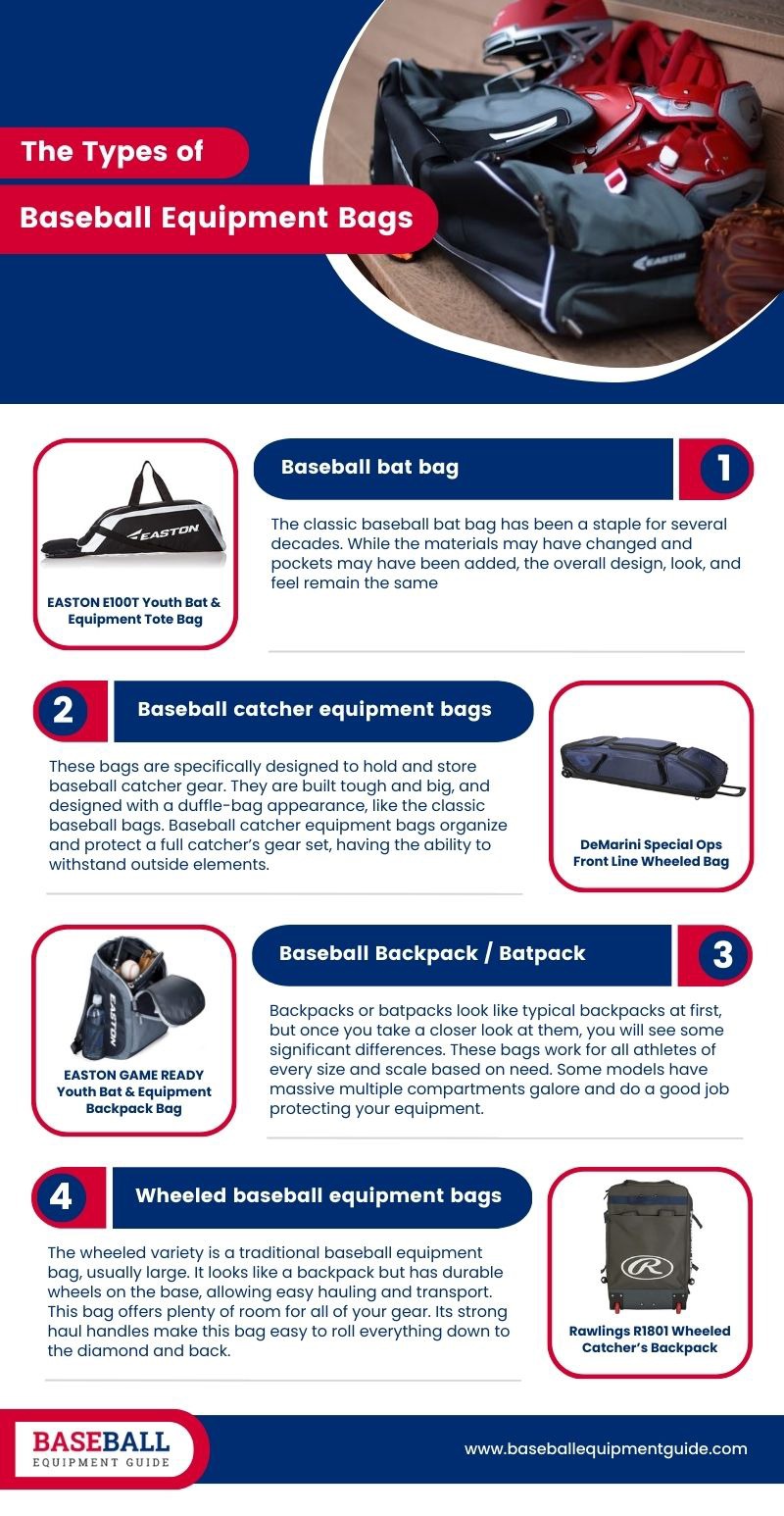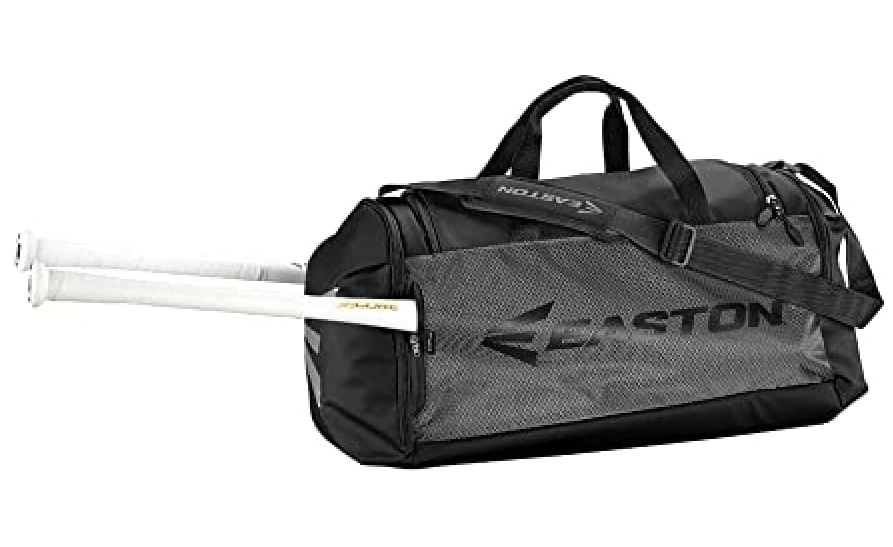To others, it may just be another bag to store your baseball gear. But you should not let that fact influence you to choose an inferior ba seball equipment bag. It still has to be made of quality materials to ensure a longer-lasting use. Yes, baseball bags are as important as other baseball gear.
In choosing an equipment bag, you are most likely to look for a trusted brand. You are sure that these brands use high-quality materials and construction. These bags will allow you to carry your gear with ease and comfort while ensuring that your items are kept safe and not lost. Baseball bats, for instance, come in various sizes, lengths, and weights, so they require a special compartment to accommodate them. While some bags essentially carry bats, others are designed like a backpack that can house all equipment aside from bats. Style is also a significant factor.
Why do you need a specific bag, such as a baseball equipment bag?
If you’re serious about baseball, then you probably have some serious baseball gear to back it up. Let’s be honest – your gear doesn’t come cheap. You’ve invested in them. Thus, you do not want to risk breaking and damaging your hard-earned, advanced, and probably quite very expensive baseball gear while going to practices or to a big game.
You don’t want just any bag. You want a durable and dependable baseball equipment bag to store, protect, and organize your precious baseball gear for your games and practices. It will make your life much easier.
The types of baseball equipment bags
Depending on your position in the team, the following baseball equipment bags are specifically designed for your needs.
1. Baseball bat bag
The classic baseball bat bag has been a staple for several decades. While the materials may have changed and pockets may have been added, the overall design, look, and feel remain the same
Typical features of a baseball bat bag:
- High-durable polyester material
- No wheels
- Tough hauling handles for easy transport
- Ample storage capacity for several bats, gloves, cleats, and a lot more.
- Multiple compartments for easy organization
- Fence hooks to hang the bag on the dugout fence
Some examples of classic baseball bat bags to check out:
- EASTON E310D PLAYER Bat & Equipment Duffle Bag
- EASTON E100T Youth Bat & Equipment Tote Bag
- Marucci Hybrid Duffel Bag
2. Baseball catcher equipment bags
These bags are specifically designed to hold and store baseball catcher gear. They are built tough and big, and designed with a duffle-bag appearance, like the classic baseball bags. Baseball catcher equipment bags organize and protect a full catcher’s gear set, having the ability to withstand outside elements. Some of these bags feature wheels for easy hauling and transport. If you’re a serious catcher, then get this bag. Or check out this catcher’s bag guide to help you make a more informed decision.
Typical features of a baseball catcher equipment bag:
- Spacious main compartment for easy gear storage
- Multiple compartments and pockets specially designed for catcher’s shin guards, chest protector, helmet, and catcher’s mitt
- Highly durable polyester construction for additional strength
- Durable haul handles for easy carrying
- Baseball bat sleeves
- Fence hooks to hang the bag on the dugout fence
Some examples of baseball catcher bags to check out:
- EASTON E610W Bat & Equipment Wheeled Bag
- Mizuno Samurai Wheel Bag X Royal/Black Null
- DeMarini Special Ops Front Line Wheeled Bag
3. Baseball Backpack / Batpack
Backpacks or batpacks look like typical backpacks at first, but once you take a closer look at them, you will see some significant differences. These bags work for all athletes of every size and scale based on need. Some models have massive multiple compartments galore and do a good job protecting your equipment. These bags balance out the weight of all the items inside, which makes carrying equipment much easier on those long walks to the field of play, around the park, and on the long walk back to the car.
Typical features of a baseball backpack or batpack:
- Large main compartment for easy gear storage
- No wheels
- Compartments and pockets specially designed for catcher’s shin guards, chest protector, helmet, and catcher’s mitt
- Highly durable polyester construction for additional strength
- Durable haul handles for easy carrying
- Baseball bat sleeves
- Foam-padded shoulder straps for support and alleviating pressure and discomfort.
- Fence hooks to hang the bag on the dugout fence
Some examples of baseball backpacks or batpacks to check out:
- Louisville Slugger Genuine MLB Stick Pack
- Nike Vapor Select Baseball Backpack Black
- Mizuno Organizer OG5 Backpack
- Louisville Slugger Genuine MLB Stick Pack
- Easton Walk-Off IV Bat & Equipment Backpack Bag
- EASTON GAME READY Youth Bat & Equipment Backpack Bag
4. Wheeled baseball equipment bags
The wheeled variety is a traditional baseball equipment bag, usually large. It looks like a backpack but has durable wheels on the base, allowing easy hauling and transport. This bag offers plenty of room for all of your gear. Its strong haul handles make this bag easy to roll everything down to the diamond and back. The wheeled baseball equipment bags have become the norm among serious baseball players of all ages.
Typical features of a wheeled baseball equipment bag:
- Durable inline wheels at the base end
- Extendable top pull handle or haul handle
- Highly durable polyester material with a reinforced base for enhanced durability around the wheels
- Large storage capacity for your gear
- Multiple compartments for easy organization
- Fence hooks to hang the bag on dugout fence
Some examples of wheeled baseball equipment bags to check out:
- Easton Traveler Stand-Up Baseball & Fastpitch Softball Wheeled Bag
- Rawlings R1801 Wheeled Catcher’s Backpack
- Rawlings R1502 Wheeled Equipment Bag
Baseball bag brands to consider (and their history)
1. DeMarini
DeMarini Sports Inc. is an American sports equipment manufacturer headquartered in Hillsboro, Oregon. A subsidiary of Wilson Sporting Goods Co., DeMarini specializes in manufacturing batting gloves and baseball bats.
Ray DeMarini founded the company in 1989. The brand was initially famous for its softball bat, which was dubbed a “high-tech” sporting tool. The company later exploded in favor of the masses when it released its double wall bats in 1995. Wilson Sporting Goods acquired DeMarini in 2000, but it wasn’t until as recently as 2012 that DeMarini included apparel in its product lineup.
2. Easton
One of the best baseball equipment manufacturers in the world, Easton was started way back in 1922 by James D. Easton. James D. Easton ran the company for a very long time before he finally passed away in 1972, and the company was handed down to his son James L. Easton. Easton makes various excellent baseball equipment bags of many models and styles.
3. Mizuno
Mizuno Corporation is a Japanese company specializing in sports gear and sportswear. It was founded by brothers Rihachi and Rizo Mizuno in Osaka in 1902, making it 20 years older than Easton.
The company’s humble beginnings consisted of selling sundries and baseballs. However, it soon moved on to order-made athletic wear by 1907. In 1913 it began manufacturing baseballs and gloves as well.
Mizuno gained popularity with its golf clubs in the 1930s and, by 1935, had established the world’s largest gold club showroom. It was in 1941 that the company dropped its original name of Mizuno Brothers Ltd. and instead adopted Mizuno Co. Ltd. as its new handle. Mizuno Co. established its first American factory in Los Angeles, USA, in 1961. The following decades would see Mizuno signing sponsorship deals with multiple sports personalities while expanding its operations and opening factories in a handful of other countries.
Mizuno is synonymous with quality, ingenuity, functionality, and style. These same traits can also be seen on their baseball gear bags. First off, they come in a wide variety of colors and styles. And we mean a lot of colors, so it’s nearly impossible that you cannot find a color scheme that you like or one that fits the color of your baseball team.
4. Lousiville Slugger
Louisville Slugger started with a fascinating little incident in 1884. John A. Hillerich, then a 17-year-old boy, used to work in his father’s woodworking shop as an apprentice. One afternoon he decided to go out and watch a Louisville Eclipse game. When Pete Browning broke his bat during the match, John A. Hillerich offered to make him a new one at his father’s shop. Pete Browning was also known as the ‘Louisville Slugger’, and this small interaction between the two was the start of one of today’s tycoons. And the fact that Pete Browning aced a game the next day with the new bat was just icing on the cake.
Browning’s new bat had his teammates rushing to Hillerich’s shop for a bat of their own. And though the business had never looked better, John A. Hillerich’s father did not want his small company to become a baseball bat manufacturer. There were times when he even turned down professional baseball players. But John was not going to stop there. And after persistent pestering and pleading, his father gave in to his demands. John took over the company ten years after that fated day in 1894 and promptly got ‘Louisville Slugger’ properly registered with the United States Patent Office.
In 1905 Louisville Slugger introduced a practice still prevalent today in sports by getting Honus Wagner, a famous baseball player, to sign one of their bats. The company grew over the following decades and recently ventured into apparel territory and other baseball equipment.
Louisville Slugger bags are one of the best and most popular equipment bags. So popular are they that many of them are included on Amazon’s best-sellers list, as far as baseball gear bags are concerned.
5. Nike
The world’s largest supplier of athletic wear, Nike is an American multinational corporation famous all across the globe. Nike is headquartered near Beaverton, Oregon. Bill Bowerman and Phil Knight founded the company on January 25, 1964, under Blue Ribbon Sports; soon, it was renamed Nike Inc. on May 30, 1971. Nike has quite a few brands under its name, most starting with ‘Nike,’ the name of the Greek Goddess of victory. Its catchphrase ‘”Just Do It,” and the iconic ‘swoosh logo’ that’s shaped like a tick mark, are recognized worldwide.
Track athlete Phil Knight and his coach Bill Bowerman originally opened up Blue Ribbon Sports as a distributor of Onitsuka Tiger, a Japanese shoemaker. In their first year of business, they grossed around $8,000 after selling around 1,300 pairs of shoes. Sales had reached $20,000 by 1965, and Blue Ribbon Sports expanded retail and distribution operations in 1967. In 1971 the partnership between Blue Ribbon Sports and Onitsuka Tiger concluded, and Blue Ribbon released its own footwear brand under Nike. By 1980 Nike had attained a staggering a 50% of the market share in the American athletic shoe market.
While Nike is mainly associated with sneakers, especially basketball sneakers, the company doesn’t hold back when it comes to making fine baseball equipment bags. As you might expect, Nike’s equipment bags come in an impressive array of colors and styles. Even at first glance, you can be assured of their bags’ quality, functionality, and durability because it’s Nike!
Nike’s baseball bags are ideal for any player, whether playing for the high school team, the Little League, or the MLB. They also make excellent softball equipment bags. The Nike Vapor is one of the finest baseball equipment bags on the market. It may be expensive, but you know you’re paying for the name and quality.
Finding the right bag is essential to carry all your gear, such as your glove, bat, baseball cleats, and more.









